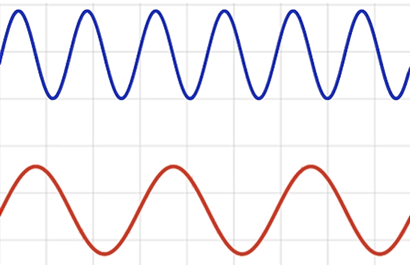A Patient’s Guide to Opioid Tapering

Treating acute pain caused by orthopedic surgery has improved drastically over the past few years. This is due in part to the use of multimodal analgesic strategies (balancing opioid pain medications with the use of non-opioid options targeting surgical, muscular and neuropathic pain) and an increase in regional anesthesia in orthopedic procedures.
Patients may be prescribed a short dose of opioid therapy to help manage short-term pain caused by surgery. For patients who may require more extensive or high-dose opioid use, or who have a history of opioid use, tapering (gradual reduction) is a vital part of the healing process. Patients who may benefit from tapering off their opioid regimens should do so under the management of a physician.
Video – How to taper off opioids after surgery
Prescription opioids include but are not limited to the following:
- codeine
- fentanyl (also known as fentanil)
- hydrocodone (Vicodin, Norco and others)
- hydromorphone (Dilaudid)
- methadone
- morphine
- oxycodone (Percocet, OxyContin and others)
- tramadol (Ultram)
Why should patients taper opioid use?
While opioids remain a significant and essential part of some patients’ healing requirements, opioid use needs to be tailored to each individual and their postsurgical pain levels.
There are many effects linked to long-term opioid use which patients should consider:
- Opioid-Induced hyperalgesia (abnormal pain sensitivity from long term opioid use).
- Physical dependence (if used long term, opioids can cause withdrawal symptoms when abruptly stopped).
- Constipation and nausea.
- Drowsiness and fatigue, which can lead to increased falls and broken bones.
- Depressed mood, which can lead to low energy, poor appetite, poor sleep, and decreased activity.
- Sleep apnea, which can lead to increased daytime fatigue and other health complications.
- Lowered testosterone in men, which can lead to lower sex drive, osteoporosis, depressed mood and loss of muscle.
- Low estrogen in women, which can lead to osteoporosis, low energy, and change in menstruation.
- Respiratory health issues.
Patients who are already using opioids to treat their pain before coming into surgery tend to require much higher doses of opioids after surgery. This puts them at a higher risk of developing opioid-related side effects and may lead to longer hospital stays or even negatively influence their surgical outcomes.
Some patients may feel withdrawal symptoms if they taper off of opioids too quickly, depending on their history of opioid use and their pain. While these symptoms can be uncomfortable, they are generally not life-threatening.
Withdrawal symptoms may include:
- Flu-like symptoms (sweating, chills, goose bumps, headache, generalized muscle and/or joint aches).
- Fatigue, restlessness, anxiety, trouble sleeping, hallucination and/or tremors.
- Nausea, vomiting, abdominal cramps and/or diarrhea.
- Increased heart rate and blood pressure (which may also feel like a headache).
Withdrawal symptoms typically start 12 to 48 hours after the last dose of opioids. Usually, it is during the 24- to 96-hour period after stopping opioids that the worst of these symptoms occur. They will then improve from between 5 to 7 days after the last opioid dose. For some patients, withdrawal may last longer. Some patients that have been on high-dose opioids may experience generalized tiredness or feel unwell for a few weeks.
How does long-term opioid use affect tapering?
Patients who have been taking opioids long-term (more than six months) should discuss with their physician their desire to decrease their opioid use. Physicians and patients should work together to develop a treatment plan to manage withdrawal symptoms.
Fast tapering is the process of stopping all opioids or reducing opioids quickly over a few days to a week, decreasing the total daily dose by 20% to 25% every few days to minimize withdrawal symptoms. Shorter intervals of time or higher percentage decreases of opiod doses will usually cause severe withdrawal symptoms. Most physicians typically recommend close monitoring and/or supervised centers for patients considering a fast tapering program.
Slow tapering is the process of decreasing total daily opioid doses by 10% to 25% every 1 to 3 weeks with close follow-up with a physician. Depending on the patient’s use prior to starting the slow taper, dose of an opioid may be decreased first before increasing the time interval between doses. Once patients are on the lowest dose of an opioid, they will then be asked to decrease the frequency of use and leaving the nighttime dose as the last dose before stopping completely.
How does short-term opioid use affect tapering?
Some patients who have been taking opioid medications for two weeks or less may be able to stop without feeling withdrawal. While this is unique to every patient, in most instances, the body has not developed tolerance during that time frame. For patients who have been taking more than six tablets per day, tapering use down by one tablet every 2 to 3 days is recommended (see a detailed tapering plan for these instances below).
A tapering plan may be beneficial for patients who have been taking opioid medications multiple times a day for more than two weeks but less than six months:
- Maintain the same interval between doses and instead cut down the quantity by about 10% to 25% every 3 to 4 days.
For example, if a patient is taking eight tablets per day, start by lowering one tablet every 3 to 4 days until he or she is down to one tablet every six hours (see chart below). - Then, every 3 to 4 days, eliminate one tablet from the daily regimen and increase the interval to one tablet every eight hours, then one every 12 hours and, finally, one tablet daily.
- The last dose that should be eliminated is the evening dose.
The table below shows an example of a tapering regimen. Here, a patient who is taking eight tablets per day (2 every 6 hours) reduces use by lowering one tablet every 3 to 4 days until he or she is down to four doses per day (one tablet every six hours).
Table showing an opioid tapering regimen over a two-week period
| Day/Dose | Dose 1 | Dose 2 | Dose 3 | Dose 4 |
|---|---|---|---|---|
| Day 1 | 2 | 2 | 2 | 2 |
| Day 4 | 2 | 1 | 2 | 2 |
| Day 7 | 2 | 1 | 1 | 2 |
| Day 11 | 1 | 1 | 1 | 2 |
| Day 14 | 1 | 1 | 1 | 1 |
Change dose, then interval
Regardless of whether a patient is tapering down from a long-term or short-term opioid use, it is important to change the dose first and the interval second. This is to maintain consistent levels of medication in the body. If a patient were to go from a high-frequency dosing (as represented by the blue line in the graphicbelow ) to a low-frequency dosing (as represented by the red line in the graphic below), it could cause drops in the medication levels in the blood. In turn, that could lead to increased withdrawal symptoms and make tapering much harder. For this reason, physicians recommend that the interval between doses the remain the same and lower the dose itself until it cannot be lowered any further.
Once that final lowered dose is implemented, it becomes appropriate to start increasing the interval between doses.

What are nonpharmacologic techniques for minimizing withdrawal symptoms?
- Stay hydrated by drinking plenty of water.
- Eat regularly and choose healthy meals.
- Stay active with moderate exercise, including walking, stretching and deep-breathing exercises.
- Use relaxation techniques, which can include breathing exercises, music therapy, guided imagery, meditation and reading.
- Keep a positive outlook and surround yourself with people to keep your moo.d positive.
- Do not substitute alcohol or other substances to help with tapering down.
It is vital for patients, caregivers, and physicians to be vigilant about opioid use and the process of tapering off of these medications. This article should not be viewed as medical advice. As with all medical regimens, patients should consult and work with their physician before tapering their prescription opioid use.

